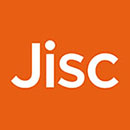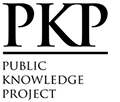Workplace Harassment in Public Employment
Abstract
The purpose of this study is to analyze the phenomenon of workplace harassment in public employment, which is specifically regulated in the Federal Public Employment Act, Law No. 25164. The independent study of public employment is justified by its own and special characteristics that allow for a separate approach of this type of harassment.
In doing so, the analysis will begin establishing what constitutes workplace harassment in particular, pointing out its differences from other concepts that present certain similarities and even get mixed up with workplace harassment.
Then, the focus will on the specific purpose of this study—workplace harassment in public employment. To that end, this study will determine the requirements that have to be met for its existence, differentiating it from the harassment that occurs in the private sector.
Despite recognizing the need for the prevention of workplace harassment, the analysis will highlight that when prevention cannot be effective, workplace harassment should be made visible, punished, and eradicated. Taking that into account, workplace harassment will be characterized as a disciplinary violation, as stated in the federal public employment service regulation, which specifically contemplates a severe sanction for workplace harassment cases.
All things considered, it will be pointed out that all good intentions set in the regulations actually vanish in reality, as the victim will hardly get to the disciplinary stage; and even if the victim gets there, he or she will have to deal with the difficulties of proving the harassment suffered; all of which conspires against preventing, punishing, and eradicating this type of behavior.
Downloads
References
Abajo Olivares, F. J. (2006). Mobbing. Acoso psicológico en el ámbito laboral. Lexis Nexis.
Ardoy, J. J. (2009). Mobbing. Bossing. Daño moral. Daño moral. Ilícito extracontractual. Médico asistente. Despido directo. Responsabilidad civil. Responsabilidad del funcionario público. Violencia en el empleo público. Derecho administrativo. Derecho del trabajo. Responsabilidad del Estado y los Tratados de Derechos Humanos. La Ley, TR LALEY AR/DOC/4147/2009.
Buteler, A. (2008). Empleo público y derechos fundamentales. La Ley, TR LALEY AR/DOC/2546/2018.
Canda, F. (2003). El régimen disciplinario de los empleados públicos (bases constitucionales y su aplicación bajo la Ley Marco de Regulación del Empleo Público y el Reglamento de Investigaciones Administrativas). El Derecho, 565.
Cassagne, J. C. (2000). Derecho Administrativo (Tomo I, 6a ed.). Abeledo Perrot.
Díaz, V. L. (2008). Violencia laboral: de lo conceptual a lo específico. Revista de Derecho Laboral, I, (2), 375-396.
Diez, M. M. (1965). Derecho Administrativo (Tomo III). Bibliográfica Omega.
Foglia, R. A. (2008). Acoso laboral e indemnización del daño moral. La Ley, tomo A.
García Pullés, F. (2005). Régimen de Empleo Público en la Administración Nacional. Lexis Nexis.
González de Rivera, J. L. (2002). El maltrato psicológico. Cómo defenderse del mobbing y otras formas de acoso. Espasa Práctico.
Hirigoyen, M. F. (2001). El acoso moral en el trabajo: distinguir lo verdadero de lo falso. Paidós.
Ivanega, M. M. (2003). Control judicial de la potestad disciplinaria de la Administración. Revista de Administración Pública. Ediciones Especiales, Control de la Administración Pública.
Ivanega, M. M. (2010). Cuestiones de potestad disciplinaria y derecho de defensa. Ediciones RAP.
Ivanega, M. M. (2013). La discriminación, el acoso en el empleo público y la afectación de la igualdad, Revista Argentina del Régimen de la Administración Pública, (2013), 245-254.
Ivanega, M. M. (2018). Mobbing y acoso laboral en el empleo público. Referencias a la jurisprudencia de la República Argentina. Anuario Jurídico Villanueva, (12), 183-198.
Jaimes, E. D. (2017). Diferencias y similitudes de abuso del ius variandi y mobbing laboral. La Ley, TR LALEY AR/DOC/3635/2017.
Kruger, V. L. (2016). El Mobbing dentro de la relación de empleo público. Su necesaria inclusión como enfermedad profesional. La Ley, TR LALEY AR/DOC/4331/2016.
Medina, G. (2016). Vulnerabilidad, control de constitucionalidad y reglas de prueba. Las “categorías sospechosas”: Una visión jurisprudencial. La Ley, F, 872.
Molina Navarrete, C. (2001). Una «nueva» patología de gestión en el empleo público: el acoso institucional (mobbing). Reflexiones a propósito de la STS 3.ª, Sección 6.ª, de 23 de julio de 2001. La Ley. Revista jurídica española de doctrina, jurisprudencia y bibliografía, (7), 1553-1571.
Nieto, A. (2006). Derecho Administrativo Sancionador (4a ed.). Tecnos.
Otaola, M. A. (2021). Mobbing o acoso laboral en Argentina: visibilizar para prevenir y disuadir. Revista Ideidez, (63), http://revista-ideides.com/mobbing-o-acoso-laboral-en-argentina-visibilizar-para-prevenir-y-disuadir/.
Palacios, L. P. (2013). Derechos humanos y sanción disciplinaria a los agentes públicos. En Alonso Regueira, E. M. (Dir.), Estudios de Derecho Público (pp. 1135-1158). Asociación de Docentes, Facultad de Derecho y Ciencias Sociales, Universidad de Buenos Aires. http://www.derecho.uba.ar/docentes/pdf/estudios-de-derecho/0011-edp-4-palacios.pdf.
Perugini, A. (2009). Relaciones de empleo público regidas por convenios colectivos. Competencia de la justicia nacional del trabajo. La Ley, C-675.
Repetto, A. L. (2008). Procedimiento administrativo disciplinario. El sumario. Ed. Cátedra Jurídica.
Reston, A. (2006). Mobbing: problemáticas y tratamiento. Doctrina Judicial (2006-3).
Rodríguez, M. J. (2007). Negociación colectiva en el sector público: sentido e implicancias. Cuestiones de contratos administrativos. Revista de Administración Pública, (347), 387-408
Santiago, A. y Linde, G. (2015). Mobbing vertical y responsabilidad política de los magistrados judiciales. El caso Roxana Romero de la Provincia de Corrientes. La Ley, TR LA LEY AR/DOC/3516/2015.
Sesín, D. (2011). Los alcances del control judicial de la potestad disciplinaria y sus elementos discrecionales. Ponencia presentada en el 2° Congreso Internacional de Derecho Disciplinario, México.
Sirounian, M. (2013). Mobbing. Importancia de su diagnóstico diferencial. Distinción con la figura del estrés laboral. La Ley, TR LALEY AR/DOC/4977/2013.
Sirounian, M. (2014a). Violencia y hostigamiento laboral. La Ley, TR LALEY AR/DOC/5040/2014.
Sirounian, M. (2014b). Violencia en la organización empresarial. Mobbing. Acoso sexual y otras figuras. La Ley, TR LALEY AR/DOC/5039/2014.
Sirounian, M. (2021). Violencia en la organización laboral. Medidas cautelares de protección de la víctima. Ley 26.458. Ley 27.372 y Convenio OIT 190. El Derecho, (6).
Stortini, D. E. (2012). ¿Cuándo hay mobbing?, La Ley, TR LALEY AR/DOC/6606/2011.
Treacy, G. F. (2011). Categorías sospechosas y control de constitucionalidad. Lecciones y Ensayos, (89), 181-216.
Villegas Basavilbaso, B. (1951). Derecho Administrativo (Tomo III). Tipografía Editora Argentina.
Copyright (c) 2023 Lucía Obligado

This work is licensed under a Creative Commons Attribution-NonCommercial-NoDerivatives 4.0 International License.
This license allows the copy, distribution, exhibition and representation of the work provided authorship is acknowledged and the work is properly quoted. Commercial use of the original work or the generation of derived works are not allowed.
The authors hereby guarantee the right to the first publication of the work to the Revista Jurídica Austral.
















































